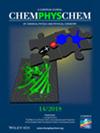磷酸铁锂电池的生命周期:生产、回收和市场趋势
IF 2.3
3区 化学
Q3 CHEMISTRY, PHYSICAL
引用次数: 0
摘要
橄榄石结构的磷酸铁锂(LFP)作为锂离子电池的阴极活性材料(CAM)前景广阔,备受关注。与常用的钴和镍相比,这种铁基化合物具有毒性低、丰度高和成本效益高等优点。尽管这种材料目前在储能技术中得到了商业化应用,但仍需要具有成本效益的生产方法来制造具有电化学活性的 LiFePO4。因此,人们一直在关注开发生产磷酸铁锂的创新方法。虽然全氟锂电池具有显著的热稳定性、循环性能和环境效益,但其日益广泛的应用也增加了电池的废弃率。对废弃全氟锂电池的不当处理会导致环境恶化和宝贵资源的耗竭。本综述全面探讨了生成 LFP 粉末的各种合成方法,包括传统方法和新型程序。此外,它还对回收废旧 LFP 电池所采用的方法进行了深入评估。此外,它还强调了 LFP 正极回收的重要性,并研究了预处理技术以加深理解。此外,报告还对废旧锂离子正极电池的回收过程提出了宝贵的见解,旨在提高人们对报废锂离子正极电池市场的认识,并倡导锂离子电池的持久可持续性。本文章由计算机程序翻译,如有差异,请以英文原文为准。
Life Cycle of LiFePO4 Batteries: Production, Recycling, and Market Trends
Significant attention has focused on olivine‐structured LiFePO4 (LFP) as a promising cathode active material (CAM) for lithium‐ion batteries. This iron‐based compound offers advantages over commonly used Co and Ni due to its lower toxicity abundance, and cost‐effectiveness. Despite its current commercial use in energy storage technology, there remains a need for cost‐effective production methods to create electrochemically active LiFePO4. Consequently, there is ongoing interest in developing innovative approaches for LiFePO4 production. While LFP batteries exhibit significant thermal stability, cycling performance, and environmental benefits, their growing adoption has increased battery disposal rates. Improper disposal practices for waste LFP batteries result in environmental degradation and the depletion of valuable resources. This review comprehensively examines diverse synthesis approaches for generating LFP powders, encompassing conventional methodologies alongside novel procedures. Furthermore, it conducts an in‐depth assessment of the methodologies employed in recycling waste LFP batteries. Moreover, it emphasizes the importance of LFP cathode recycling and investigates pretreatment techniques to enhance understanding. Additionally, it provides valuable insights into the recycling process of used LFP batteries, aiming to raise awareness regarding the market for retired LFP batteries and advocate for the enduring sustainability of lithium‐ion batteries.
求助全文
通过发布文献求助,成功后即可免费获取论文全文。
去求助
来源期刊

Chemphyschem
化学-物理:原子、分子和化学物理
CiteScore
4.60
自引率
3.40%
发文量
425
审稿时长
1.1 months
期刊介绍:
ChemPhysChem is one of the leading chemistry/physics interdisciplinary journals (ISI Impact Factor 2018: 3.077) for physical chemistry and chemical physics. It is published on behalf of Chemistry Europe, an association of 16 European chemical societies.
ChemPhysChem is an international source for important primary and critical secondary information across the whole field of physical chemistry and chemical physics. It integrates this wide and flourishing field ranging from Solid State and Soft-Matter Research, Electro- and Photochemistry, Femtochemistry and Nanotechnology, Complex Systems, Single-Molecule Research, Clusters and Colloids, Catalysis and Surface Science, Biophysics and Physical Biochemistry, Atmospheric and Environmental Chemistry, and many more topics. ChemPhysChem is peer-reviewed.
 求助内容:
求助内容: 应助结果提醒方式:
应助结果提醒方式:


